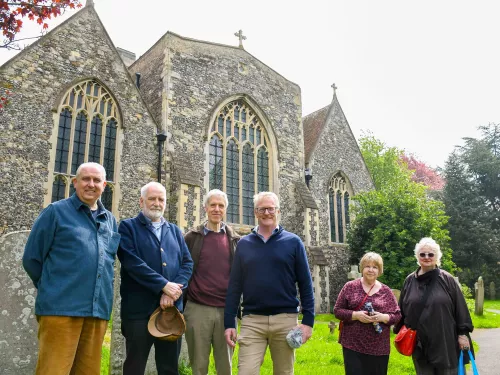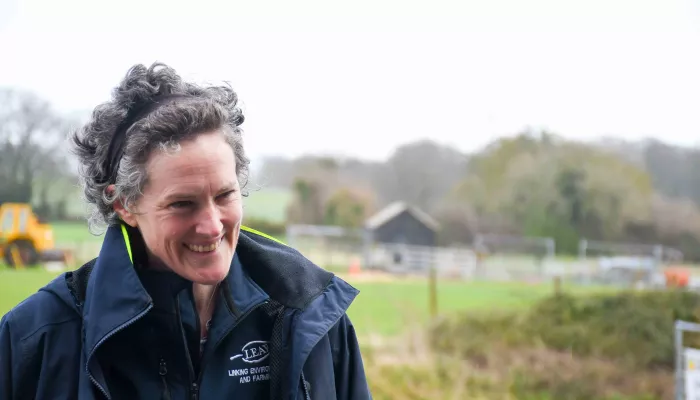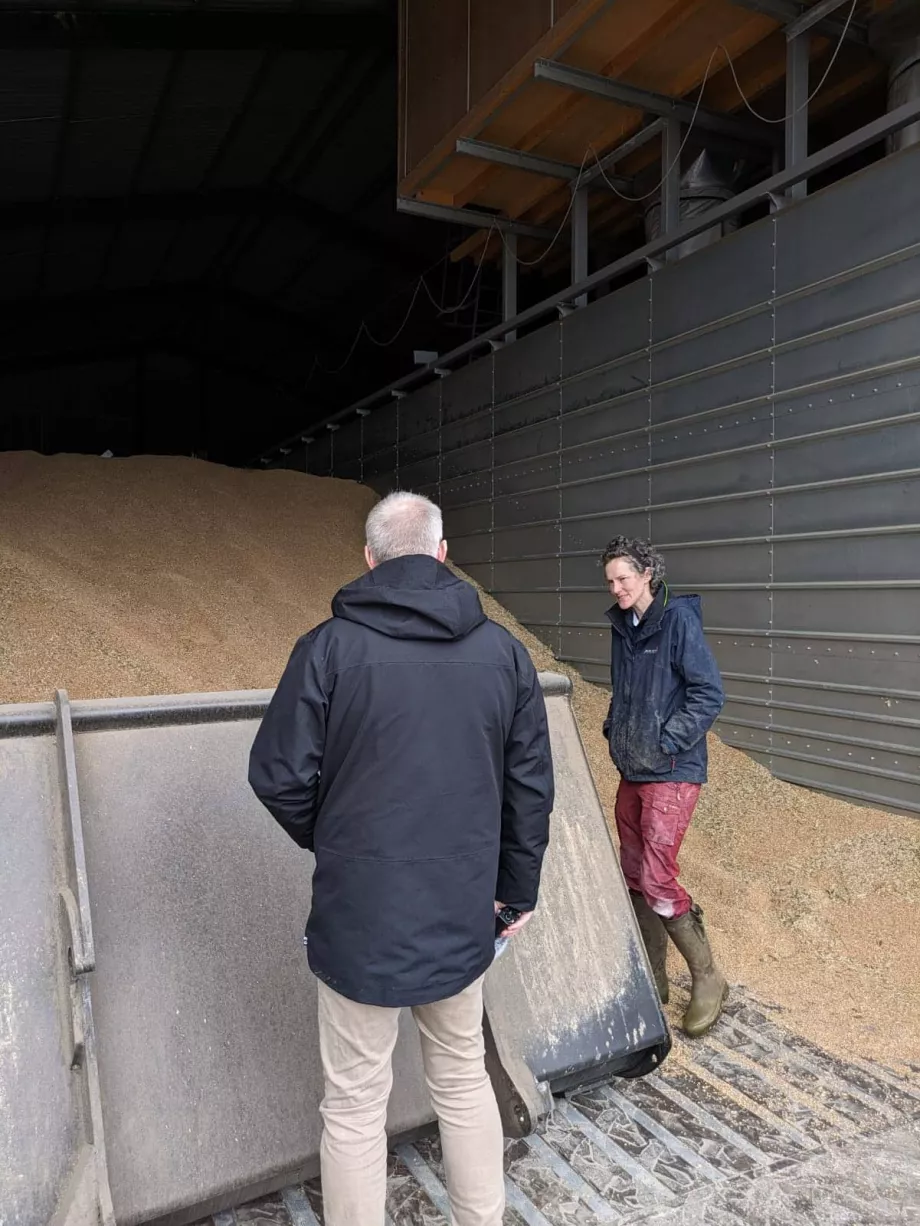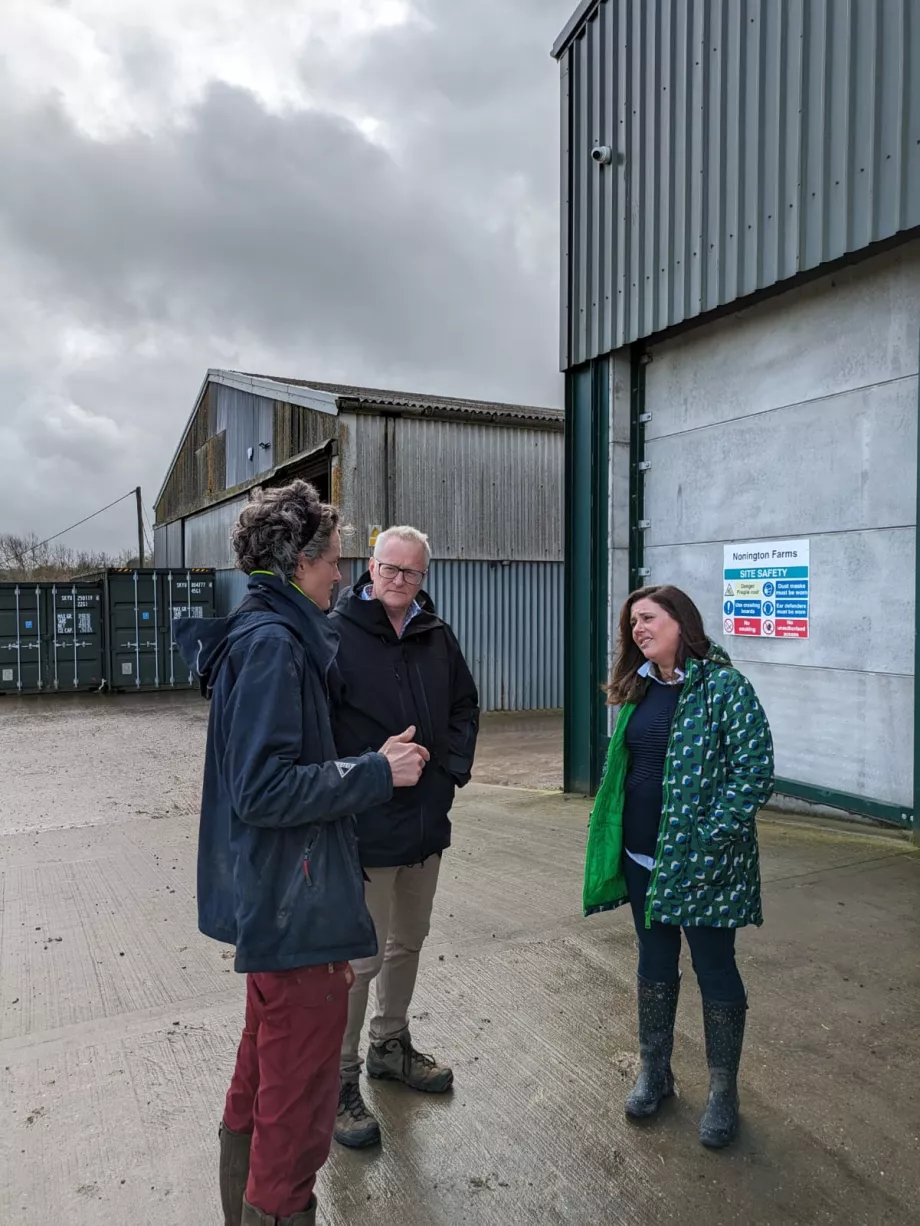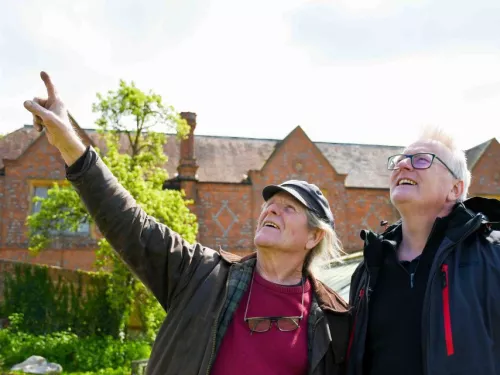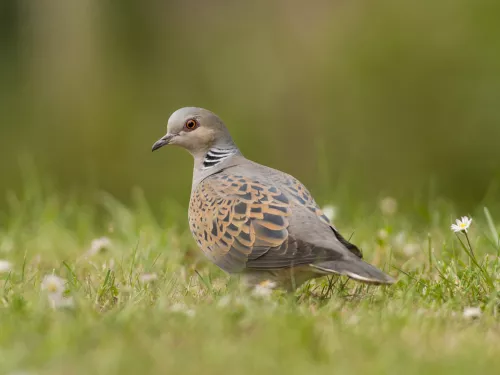Rob: So, in terms of how you're going to make this happen, because there's so many different kinds of landowner doing so many different kinds of things and you don't own the land. So, you're just trying to do this through the powers of persuasion?
Liz: Well, the purpose of the strategy is to identify where in the county our efforts and resources and finances would be best directed. So, both in terms of return for nature - benefiting biodiversity - but also where it might also deliver environmental benefits such as flood water management, air quality improvements, and the like.
And sitting underneath that is a framework for delivery of financing funds in an investment. And effectively as we understand it, the strategy will help direct the funds and investment. And one of the things that is going to be directed by the Local Nature Recovery Strategy is the new Environmental Land Management Scheme. So that's the new funding approaches for farming and land owning.
Rob: OK so from your point of view then, what will success look like in five years' time? What will have been achieved?
Liz: Well, five years’ time, that's quite a short sort of time frame for nature recovery. But I suppose what we will have is a Local Nature Recovery Strategy that has been endorsed and adopted by all of those that we need to make it happen and make it work. That we will have the resources to deliver on that strategy. And that we'll have some really key big landscape-scale projects working with multiple partners and actually moving forward to working towards the priorities that we want for nature in the county.
Rob: OK. So we're on Nonington Farm today. What do you make of it, what have you you've seen so far?
Emma: Well, it's wonderful isn't it? It’s so great seeing sort of - traditional, sort of, you know land use in the county. I mean, we are the Garden of England in Kent and we're renowned for our farming, but it's brilliant to see where farming can work alongside nature recovery and environmental improvements just so beautifully.
Rob: And there's loads of different acronyms involved in various things. So, this is a LEAF farm - which stands for, what is it, Linking the Environment and Farming. And you need landowners to kind of buy into this as a concept, don't you?
Liz: Yes, absolutely. So we, we need them to see the benefits of it and the returns that can come. And having spoken to Emma this morning, you know, it sounds like it can be done. Which is, you know, what farmers need to know. Farmers are. We're very much aware that we can't ask farmers to change their farming practices for the benefit of nature without there actually being, you know, a return on it or certainly that it's viable. You know, a lot of farmers are really struggling and we need to make sure that this is something that is viable for them. And that's one of the reasons why we want to involve the farmers in the development of the strategy. By doing so we can make sure that any of the priorities, and also the potential measures - to you and me that's actions - that will sit underneath those priorities can actually be delivered by the people who own the land and have the, you know, the opportunity to help nature recover.
Rob: And on a personal level, how does it make you feel? Because presumably you do the job you do because you want to see things be different in the future.
Liz: Absolutely. And well, I've worked for KCC for twenty years now and various jobs, and I honestly think that this is the first time I've really felt that we could be seeing a genuine step change in the way nature recovery could be tackled. We've done a biodiversity strategy before and there hasn't been the delivery framework that's necessary to make it actually turn from aspirations into action. And I really think it could do this this time. And I think one of the reasons it could be really successful is, quite often at sort of strategic levels, we like to do our strategies in a dark room and then we go out and consult on it and say to people, “What do you think?” Well, this time round we're saying to people, “What do you want? What do you want the strategy to cover?” And so, I think that, you know that in itself means that this will be a really meaningful, realistic, pragmatic, but hopefully also ambitious and deliverable strategy that sees nature get back on its feet because we know that nowhere needs it more than Kent.
Rob: Now over the last few years, Emma and James started taking their environmental protections really seriously. They've committed to planting and restoring a kilometre of hedgerow every year going forward, and to using old fashioned hedge-laying techniques rather than just cutting them back by machine, which has been the standard practice on most farms since the 1950s. And they've already seen a boom in the numbers of birds and insects across the landscape as a result. They've also started milling some of their own flour on the farm and all the farm's power comes from solar panels that are mounted on various barn roofs, so no additional land is being taken up by them.
Now, Nonington is in fact one of only eight arable farms in England that are accredited as being a LEAF demonstration farm (Linking Environment and Farming). And it's the only one currently in the South East. But that is something they are really hopeful will be changing in the near future.
